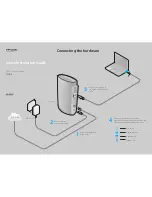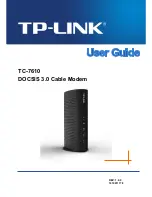
IndustrialPro™ and MobilityPro™ Gateway
User's Guide
Copyright © 2010 Sixnet LLC. All rights reserved.
34
1.11
– November 2, 2011
6
IP Networking Features
As mentioned previously, the modem acquires an external public or private IP address (WAN IP, or Wide Area Network
IP) from the cellular network upon establishing a connection. A remote user can communicate with the modem or a host
behind the modem; however the appropriate port-forwarding, DMZ or IP pass-through and LAN IP configuration must
be set on the modem. Read on for a description of each configuration option.
Some carriers disable remote access as a security measure. If you are certain that the modem is
on the cellular network (i.e., it has acquired a WAN IP) and that the local network is set up
properly, but you cannot reach the modem remotely, confirm with the carrier that incoming IP data
traffic is allowed on the required TCP or UDP port. Read the
BlueVue Device Manager
Troubleshooting
section for more details.
6.1
Port-forwarding
Since the modem is a network address translation (NAT) enabled router, the remote computer connecting to the
modem’s cellular WAN IP cannot access devices/servers on the modem’s LAN if the modem is not specifically configured
to forward the appropriate ports to the LAN devices/servers. Port-forwarding, or tunneling, is the act of relaying an
incoming packet to one or more local destinations depending on the port(s) through which the packet came.
The main use of port-forwarding is to allow an external user to reach a port on a private IP address from the outside via
a NAT. This allows remote computers to connect to a specific computer within a private LAN, depending on the port
used to connect.
To set up the modem's port forwarding rules, navigate to
CONF (Modem Configuration) > Port Forwarding/DMZ
.
Summary of Contents for IndustrialPro
Page 72: ......
















































